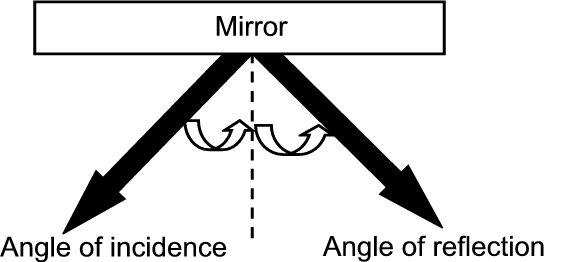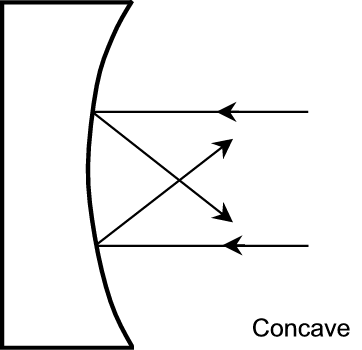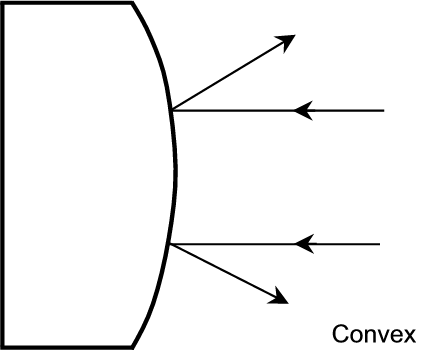| << Chapter < Page | Chapter >> Page > |
Light can change direction, though, and this happens in two ways:
REFLECTION: We are going to look at reflection as it occurs with mirrors.
When a beam of light arrives at a certain angle, it will be reflected at the same angle.
ANGLE OF INCIDENCE = ANGLE OF REFLECTION
 |
Assignment 1:
1. Draw a sketch of a mirror, showing the angle of incidence and the angle of reflection. Use a protractor.
Assessment of the Sketch
Has the sketch been drawn correctly?
[LO 2.4]
Curved mirrors
Curved mirrors have many applications. They enlarge or diminish and distort the image. A curved mirror can be CONCAVE. This will CONVERGE light beams towards a fixed point, the FOCUS.

Other mirrors may be CONVEX . They will cause light beams to DIVERGE (spread apart). This scales down the image. An application of this is evident in the rear view mirror of a motor car or in wing mirrors.

The same effect can be achieved with polished metals.
Assignment 2:
1. Try the following:
Polish the surface of a large serving spoon to get it to shine.
Look at your own image in the concave and on the convex side of the spoon and compare the shape of the reflections.
Draw the differences in the spaces that are provided:
 Concave Concave |
 Convex Convex |
Draw convergent and divergent beams from the right to add to the following sketches. Get your educator to help you.
 |
 |
Assessment of Sketches
Were you able to complete the sketches correctly?
[LO 2.4]
LO 2: Constructing Science Knowledge:
The learner will know and be able to interpret and apply scientific, technological and environmental knowledge.
This is evident when the learner:
2.4 applies knowledge.
Assignment 1:
LIGHT
REFLECTION:
When a beam of light arrives at a certain angle, it will be reflected at the same angle.

CURVED MIRRORS


Draw the differences in the spaces that are provided:
 |
 |

Notification Switch
Would you like to follow the 'Natural sciences grade 8' conversation and receive update notifications?